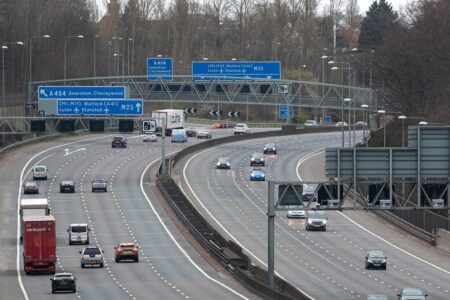Mary Scott Nabers, president and CEO of Strategic Partnerships, Inc., provides crucial insights into the rapidly evolving landscape of government contracting, including predictions on funding shifts, regulatory changes, and emerging opportunities that will shape industry in 2025.
The unique and disruptive chaos so painfully visible at the federal level of government is causing millions of Americans to be extremely concerned about what comes next. The existing angst has disrupted global markets and caused many businesses to put a pause on major business decisions.
Officials at the state and local levels of government are either following the federal government’s lead with similar changes and disruptions, or they are also simply waiting to see what comes next.
For almost 30 years, Strategic Partnerships, Inc. has existed at the intersection of government and the private sector. More than half of our team members are former government executives, and the other half are industry experts. Because of what we do, our eyes are never off what is happening in the US government marketplace.
Today, we find ourselves positioned at a unique vantage point that provides us with a close view of history in the making. Because of that, we are often asked to predict what will happen next. Our clients seek guidance, and we struggle daily to stay informed so we can provide it. That task was easier a few years ago.
At this moment, there are no absolutes. These times are too unique, and changes are occurring faster than one would have thought possible. But, because of requests, I’ll share my thoughts about what I believe we should expect.
Here are 11 predictions:
- Chaos will remain for many more months, but by the last quarter of 2025, the future will be much clearer. Business decision making will be easier.
- Job creation will not be able to keep up with the massive federal employee layoffs so unemployment will be higher than normal.
- The number of federal programs providing funding for America’s critical needs – water, clean air, roads, airports, bridges, housing, research, economic development, broadband and ports – will be fewer, but critical funding programs will survive.
- Many federal activities will be transferred to the states. The most likely targets are education, parts of FEMA and regulatory compliance programs.
- Non-profit organizations will be in danger of losing their tax-exempt status, and many will be audited for political involvement and DEI efforts.
- Federal funding previously allocated to colleges and universities will be reduced and likely stopped if evidence of DEI programs exists.
- Environmental regulations will be reduced, and many will be lifted completely.
- Funding for renewable energy projects may be eliminated along with support for electric buses and fleets.
- Public transportation agencies will see funding reductions and support for transit-oriented development is likely at risk.
- Procurement and government contracting will be more highly scrutinized, but the volume will not be diminished.
- Federal subsidies for housing will be reduced, and funding for rural development could be less.
Since the US government marketplace is the largest market in the world, it will remain robust and in need of private sector collaboration, expertise and services. The following observations are for businesses that contract with the government.
To be successful in these changing times, here are my top 10 suggestions:
- Pricing will be a critical component of being selected as a government partner. In the past, selections were usually made based on the best offer rather than the lowest price. That will continue to some degree, but a large price variance could more easily eliminate the highest bidder.
- Large multi-year contracts will be subject to more scrutiny, and there will be intense review before renewals.
- Certifications for small and minority-owned businesses could be eliminated or reduced in value.
- It will be more important for contractors to understand each state’s governing structure and the current political environment when selling to jurisdictions within any state.
- Governmental entities at every level of government will be at great risk of budget reductions. Contracting services that provide greater efficiency and require fewer resources will be very attractive.
- Companies with American roots will have advantages.
- Technology modernization and AI will be in high demand, but security certifications will be required.
- Public-private partnerships will be more abundant. Private sector investors will be encouraged to participate, but tax credits may be eliminated.
- Cybersecurity will be a top concern, and funding will be available for security enhancements on every type of operational project – water, power, utilities, public buildings and public networks.
- Large complicated public projects will require delivery partners before other solicitations are released. Delivery partners will likely be charged with ethical and regulatory oversight along with all other project responsibilities.
It is a changing world, so adapting quickly and understanding what is important to public officials is the basic component for contracting success. Along with the changes noted, there is good news as well.
It will be almost impossible to reduce funding for projects related to water, transportation, power, technology, public safety, disaster recovery and sustainability, for example. Thousands of contracting opportunities will also continue to be available throughout America. Smart contractors will become “trusted partners” to public officials, and good delivery services will boost success and open additional doors for collaborative efforts.
Furthermore, the US government marketplace will continue to remain the world’s largest market, and public entities will continue to purchase every conceivable type of product and service. And contracting opportunities will not be fewer, and companies that study the marketplace will have a competitive advantage.
Big changes have occurred many times in the past and disruptive change always creates anxiety because of risk. But history reminds us that abnormalities are usually short term.





